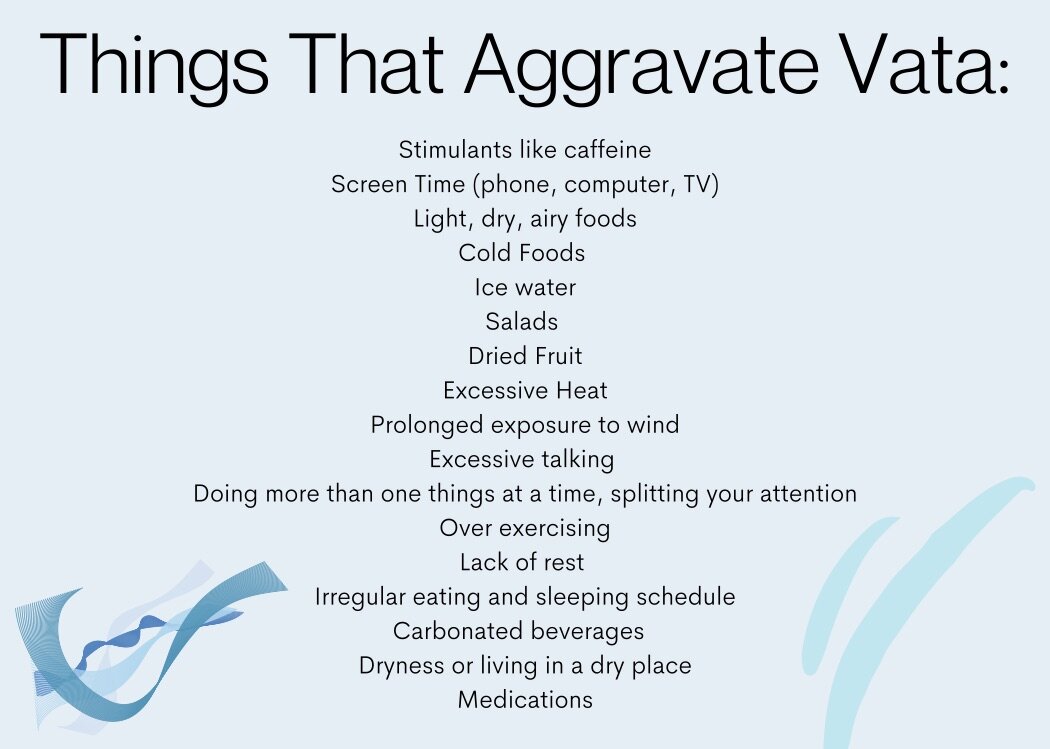
Tips On How To Balance Vata
& Why They Can Change Your Life
Alexandra Sargent: February 9, 2021
Ayurveda teaches us that every individual has a unique combination of the three doshas; and the three doshas are away of understanding how the 5 great elements of earth, air, fire, eater and ethers, work within us and around us.
When a dosha becomes imbalanced or out of proportion to our unique design, it creates an environment where not only can disease flourish, but we simply don’t feel well.
Vata is the dosha of air and ethers elements. It is light, mobile is responsible for our movement, and facilitates most of our bodily functions. Because of vata’s mobile quality, it is also the dosha that can most easily become imbalanced.
In our busy modern world, technology coupled with career stress, commute times and environmental pollution have created a lot of problems for our body’s natural ability to stay healthy and grounded.
Nowadays more and more people show signs of vata imbalance.
Signs of Imbalanced Vata;
Headaches
Stiffness
Constipation
Insomnia
Infertility
Eye pain
Adrenal fatigue
Tinnitus
An overworked nervous system
Inability to focus
Thyroid problems
Psychological symptoms include fear, anxiety, insecurity, confusion, aimless talking
Around 70 % of all modern day diseases are vata related. This makes it crystal clear that taking care of vata is of the utmost importance.
One of the main tenets of Ayurveda is “like attracts like and the opposite brings balance.” Since the main qualities of vata are cool, light, dry, rough, subtle, and mobile, the best way to calm vata is to bring the quality of warm, moist, smooth, and static into our day to day living.
The following lists show contributors to vata aggravation and how to pacify it.




